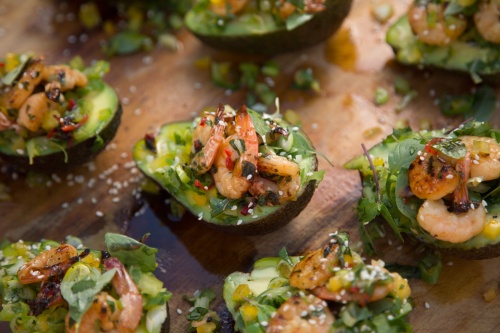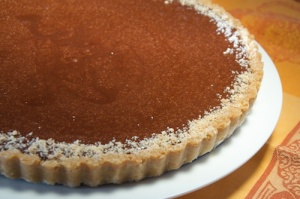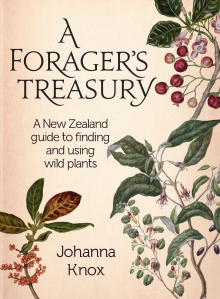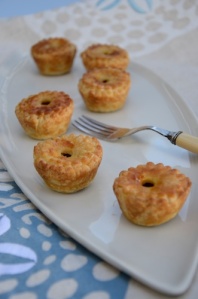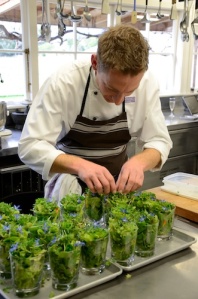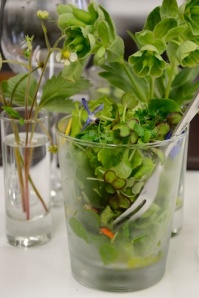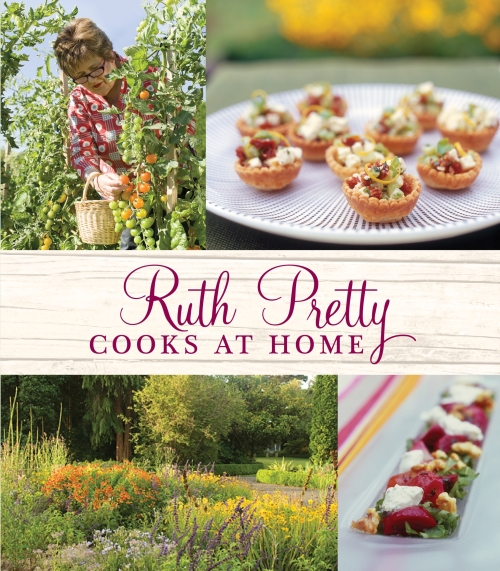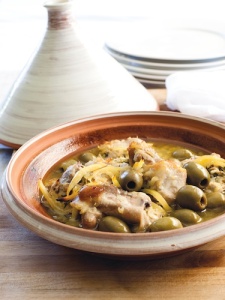Who else remembers magazines with recipe pages designed four to a page and formated on both sides so you could cut them out and collect them as recipe cards? Food pic on one side and recipe on the other, they were a good idea but the boxed set never really challenged the traditional way of filing recipes in ringbinders and scrapbooks. Well now they’re back – not as magazine cutouts but as fully formed sets of cards neatly stacked in boxes that look good on the bench. Penguin the publisher has its version and so has Ripe the delicatessen.
I love the Ripe version. It arrived just before Christmas in a flat pack with assembly instructions that make the building process quite simple – no nails required. Whoever thought this system through is a genius. The laminated cards stack up neatly between colour-coded dividers in a smart plywood box that has a metal lid which doubles as an angled card holder – no more using the pepper mill to keep the right page open on the bench.
The indexed dividers are smart too, arranging the recipes in a way Ripe devotees like to cook. There are sections for Salads, Nibbles and Dips, Dressings and Rubs, Soups & Starters, Lunch & Dinner, etc. and a handy secton for measurements, tips and conversions. My box came with two sets of themed cards: Summertime and Festive Celebrations. I’m told more sets will be published on an ongoing basis and there are also a few blanks for recipes that come from elsewhere. I’ve already started stuffing my box full of extras and I’ve also tried out a few of the original recipes. These are fresh and flavoursome with Ripe’s signature emphasis on clever salads and decadent baking.
Given the retro nature of the boxed set idea I was particularly drawn to a recipe that reinterprets a dish from the 70s. Back then, when I was little, dining out with my parents was a huge treat. I loved being able to choose three courses from a menu. I like to think I was pretty adventurous but when it came to the entrée I always chose the avocado. In those days it was an ‘avocado pear’ and it came either halved and filled with vinaigrette – how I loved scooping out the flesh and dunking it into the oily pond – or it was stuffed full of shrimps coated in Thousand Island Dressing. I liked them either way but now I’m a grownup I much prefer Ripe’s Asian-inspired avocado boats filled with spicy prawns. Recipe below.
Ripe: The Box comes with two sets of recipe cards and some blank cards. RRP $60 Order online
Link to NZ Life & Leisure on Facebook for the chance to win one of two Ripe recipe boxes
ANGIE’S AVOCADO & SPICED PRAWN BOATS
400g FRESH PRAWNS, tail on
1 or 2 CHILLIES, finely diced
zest and juice of 1 LEMON
1 tbsp COCONUT SUGAR
2 KAFFIR LIME LEAVES, finely chopped
¼ cup SESAME SEEDS
1 SPRING ONION, finely sliced
½ cup CORIANDER, roughly chopped
½ YELLOW CAPSICUM, finely diced
½ GREEN CAPSICUM, finely diced
¼ cup THAI BASIL LEAVES
1 tbsp COCONUT OIL or RICE BRAN OIL
5 RIPE AVOCADOS
SALT & freshly ground BLACK PEPPER
2 LIMES cut into wedges to serve
To marinate the prawns: in a bowl, place the prawns, chillies, lemon zest & juice, sugar, lime leaves & sesame seeds. Toss to coat the prawns in the marinade.
Place in the refrigerator for at least 15 minutes. In another bowl, mix the spring onions, coriander, capsicums & Thai basil leaves together.
Place a frying pan over a high heat; once the pan is smoking hot add the coconut oil.
Then add the prawns & the marinade, fry for a few minutes or until the prawns are caramelised & golden.
Remove from the heat & transfer the prawns with any remaining marinade in the pan, into the bowl with the spring onions & capsicums. Season to taste with salt & freshly ground black pepper.
Cut the avocados in half, remove the stone but leave the skin on.
Place the avocados on a serving platter. Top each avocado with a big spoonful of the prawn mix. Serve with wedges of lime on the side. Serves 10 as an entrée.

